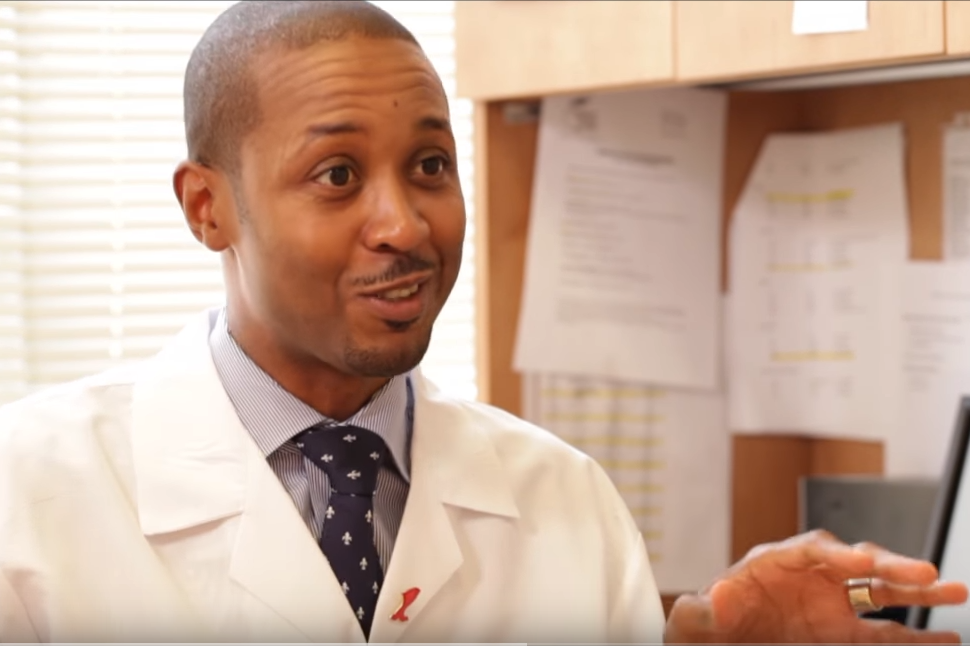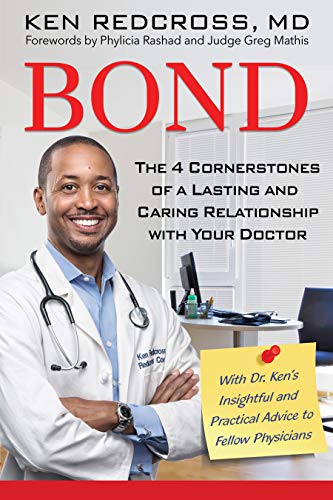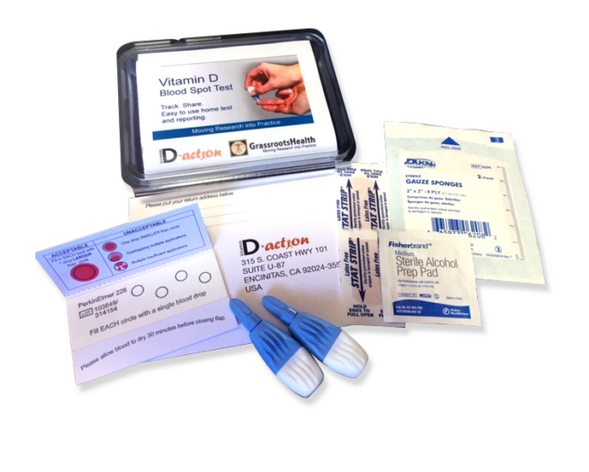
With its new “Get On My Level” campaign, the Organic & Natural Health Association hopes to help African American, Native American, and Hispanic American communities mitigate one of the biggest—and most modifiable–risk factors for COVID-19: Vitamin D deficiency.
The program is focused on raising awareness about the connection between vitamin D deficiency, poor overall health, and increased COVID risk. It also promotes wider use of a simple, at-home vitamin D fingerstick test kit that can empower people to take charge of this key factor in the health improvement equation.
“The idea is to get families engaged, get the kids to have fun with this,” says Ken Redcross, MD, a functional medicine physician based in New Rochelle, NY, which was one of the early east-coast COVID-19 hotspots at the outset of the pandemic last Spring. “The test engages people. They can challenge each other to “get on my level.” Testing opens the door for education. It’s a grass roots effort to get the talk going in the Black and Latino communities.”
D is for Disparity
Black Americans represent 13.4% of the US population, according to the US Census Bureau. But counties with higher black populations account for more than half of all coronavirus cases and almost 60% of deaths, according to a multicenter research project published in May.
From the earliest days of the pandemic, it became clear that the heaviest burden of morbidity and mortality was going to be heaviest on Black, Hispanic, Native American, and Immigrant communities. It was also evident that while the coronavirus itself does not discriminate according to socioeconomic class, the clinical outcomes of COVID-19 were strongly influenced by affluence or lack thereof. It’s a stark fact that poor people are at greater risk of exposure, and higher risk of dying from COVID.
African-American communities have been especially hard-hit, says Redcross. “Everyone knows someone who’s died from COVID, or who’s gotten very sick.”

In New York City, the East Coast epicenter of the first COVID wave, Black and Hispanic people have died at twice the rate of whites. The same patterns appeared in Chicago, where African Americans were dying at six times the rate of white Chicagoans. And it was no different in Los Angeles. In May, public health officials there stated that “the virus is increasingly ravaging predominantly black and Latino neighborhoods with higher poverty levels, while wealthier, majority-white enclaves that initially reported some of the highest infection rates see much slower growth.”
Native Americans are also disproportionately affected. By mid-May, the per-capita caseload within the Navajo Nation—split between Utah, Arizona, and New Mexico—had surpassed that of New York City.
And CNN reported that the Navajo Nation, which stretches across parts of Utah, Arizona and New Mexico, has passed New York and now has the highest per capita Covid-19 infection rate in America.
Blacks, Latin Americans, and Native Americans are not genetically more susceptible to Coronavirus than people of White European origin. But they are statistically more likely to be poor. Likewise, poor people are not intrinsically more susceptible, but they are more likely to have poorly managed pre-existing conditions, to work in high-risk jobs that cannot be done from home, to live in substandard housing, and to lack access to consistent medical care.
“Coronavirus shone a very bright light on disparities in the US,” says Redcross. “We can now really see the “haves” versus the “have nots.”
By mid-summer, researchers started to see an association between vitamin D deficiency and increased COVID risk. Given the widespread prevalence of vitamin D deficiency among dark-skinned people, some investigators have suggested that this is one of the key drivers of the inordinately high COVID morbidity and mortality rates among African-Americans.
While no one is positing that the deficiency “causes” COVID, it does appear to predispose people to worse outcomes, and suggests the possibility that supplementation might mitigate the risk.
It is these observations that sparked the “Get On My Level” project.
“Wealth disparities, poor housing, lack of job opportunities, lack of healthcare access….these are very large problems that are not quickly or easily solved,” Redcross told Holistic Primary Care. “But vitamin D deficiency is very easily and inexpensively modifiable. Other things are not.”
Dr. Redcross and the leadership of the Organic and Natural Health Association (ONHA) hope that by raising awareness about the importance of vitamin D, and encouraging people to raise their blood levels through supplementation, they can attenuate one of the variables that contribute to the staggering health disparities between White Americans and communities of color.
Skin in the Game
Redcross has African and Native American ancestry; these issues are very close to home for him.
His background, along with his geographical location in one of the major epicenters of COVID-19, put him a unique position to affect change.
The reality is that many Black, Hispanic, Native American, and immigrant Americans feel a deep mistrust of doctors and of the medical community in general, Redcross says.
“You have to acknowledge the distrust. It goes back to Tuskeegee. It goes back to the gynecologist (J. Marion Sims) who experimented on enslaved African American women without anesthesia. These things are common knowledge in our communities for generations. Because I’m African American and Native American, because I’m of the community, I can say, ‘Look, guys, I get it.’”’
The lack of trust is also due to the fact that Blacks, Latin Americans and Native Americans do not see themselves well-represented within the ranks of medicine. Only 6% of all US physicians are African American, and less than 5% are Hispanic. The latter figure is especially surprising given triple digit growth of the Hispanic American population over the last two decades.
All About Heart
But Dr. Redcross, who is the author of a book called Bond: The 4 Cornerstones of a Lasting and Caring Relationship with Your Doctor, stressed that developing trust with marginalized people is, “not about your melanin, it is about your heart. The trust happens when the message is right, and the messenger is invested in the wellbeing of the people. It happens when your heart is in it.”

Part of that is recognizing that living conditions vary greatly within different communities, so pandemic prevention measures need to be tailored to the on-the-ground realities.
“You can’t do social distancing in a lot of communities,” he stressed. “They’re multigenerational, and people are often living very close together in extended family circles.”
People may view communal gatherings as an essential survival strategy. They may resist recommendations to self-isolate not because they are stubborn or ignorant, but because such advice goes against a survival pattern that has helped them for centuries.
Further, only one in five African Americans has a job that permits working from home. It is important to take this into consideration.
A Grassroots Effort
Vitamin D testing and supplementation will not solve the nation’s deeply seated racial and ethnic strife. But it could make a big difference in the overall health status of some of our most vulnerable citizens.
“I would never ever say that vitamin D treats COVID-19. That’s not what this is about,” says Redcross. “But we know it plays a role in immune system health, and with some of the risk factors for COVID. This is about improving general health. It’s a cheap way to make a really big difference in peoples’ lives.”
Through the www.powerofD.org website, ONHA makes the fingerstick test kits available for $65. It also gives people the option to add on other risk assessment tests such as hemoglobin A1c, C-reactive protein, omega-3 index, and thyroid stimulating hormone.
Via a vitamin D calculator, the site provides guidance on how to interpret the test results, and how to improve one’s nutritional status. Notably, the project does not sell dietary supplements.

Get On My Level also gives visitors the opportunity to enroll in GrassrootsHealth’s “D*action” research projects.
Over the past decade, GrassrootsHealth—an independent research and health advocacy organization—has worked diligently to educate the public about the detrimental health effects of common nutrient deficiencies and increase access to testing and to supplementation. Simultaneously, the organization funds field trials with special emphasis on medically-underserved communities.
Dr. Redcross says he likes to see his patients, regardless of their race or ethnicity, achieve vitamin D serum levels between 40 and 60 ng/ml. At baseline, most are far below that threshold.
In the context of COVID, he points out that “some of the studies show that when your D levels are down around 19 or 20, there’s a very high mortality in the ICU, compared with people who have vitamin D levels over 30.”
The mainstream medical view is that levels over 30 ng/ml are sufficient, but Redcross stresses that this number is the threshold for preserving good bone health.
The new piece of the vitamin D story is its potential role in bolstering immune system function. “There’s already good data that it helps with acute respiratory infections and Influenza. Anecdotally, is there a reason why flu is so rampant in the winter? Yes! It’s because people aren’t getting sun. So their vitamin D levels drop.”
As we head into winter, and with both COVID and ordinary flu surging, this is important to keep in mind.
Dr. Redcross says he encourages his patients to take as much as 5,000 IU per day, if they can afford it. Standard multivitamins typically provide 1,000-2,000 IU, which might not be enough to push people up into the 40-60 ng/ml zone.
In addition to supplements, patients can also increase their levels by including more fortified milk (if they are not dairy-sensitive), sardines and other fatty fish, or cod liver oil in their diets.
The COVID-19 pandemic has revealed the rifts that run through our society. Dr. Redcross believes medical professionals have a role to play in healing them.
“Love and unity are the only things that will make it better. But to get to that, we have to have the tough discussions.”
END







